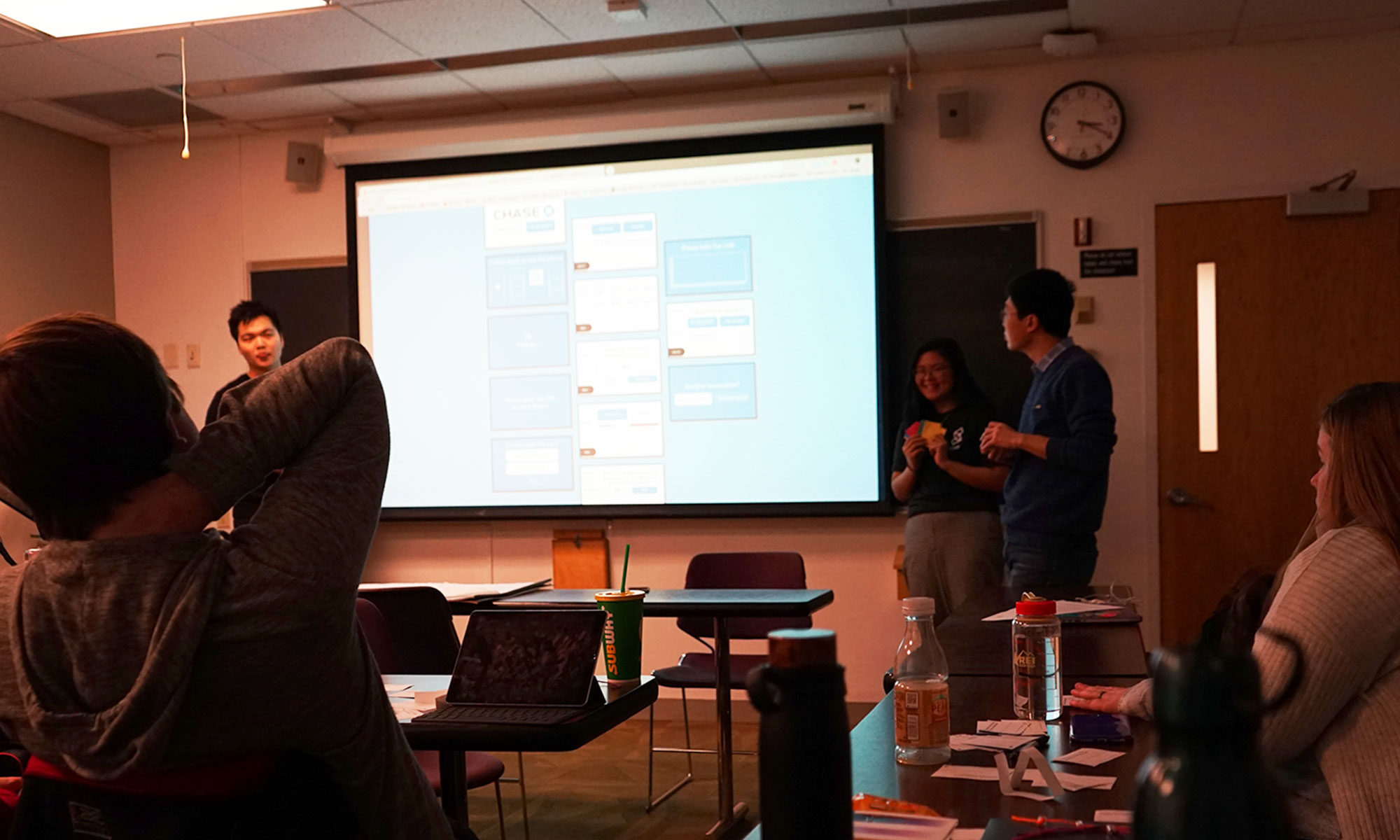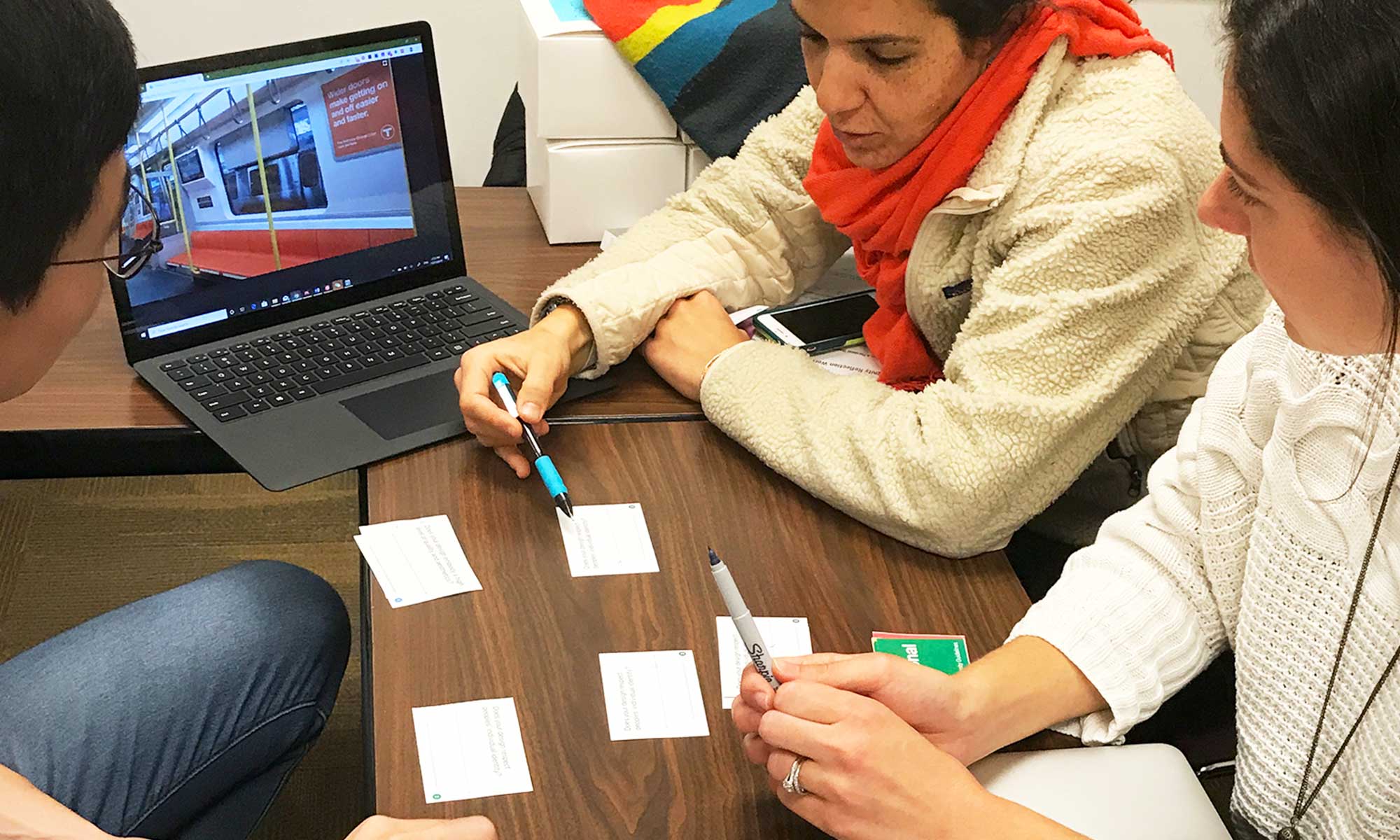Dignity Guidelines for Design
Evaluate Design Practices through the Lens of Human Dignity
Most product designers in the industry live within their comfort zone and ideate in their fixed mindset. For this project, we want to reframe the design process with dignity guidelines to “Design Outside the Box.” We designed the sleeve that provides easily removable cards with a thumb-shaped opening, taking advantage of the shape of letter D in Dignity Guidelines. We used four colors to categorize the four aspects of dignity: merit, autonomy, universal right, and interpersonal care. We envisioned our cards being integrated on an industry-level design critique, where designers sit down together and provide feedback on a presented design.
Resources
Workshop: Evaluating Design based on the Dignity Principle
To test out the card ideas, we designed a workshop to use probes to evaluate three existing design examples, including the new MBTA train car in Boston, a new digital Wallet app from CHASE, and the new Apple EarPods (Figure 1). Those design projects range from industrial design to user experience design. We decided to use the “Once Card One Line” in the workshop for participants to have a design crit. Where a card/guideline is drawn, and all participants mark where they think the design aligns with the guideline. Outliers will have a chance to share their dissenting thoughts. After explaining the flow of the workshop, participants are allocated with different design projects to evaluate led by the workshop coordinator (Figure 3).
To come up with the dignity guidelines, we qualified four concepts of dignity and created a list of questions for each concept. They are:
| Dignitas/Merit | Functions, visual appearance, and brands might be the basic properties for designers to consider. Design needs to be recognized in a social level. |
| Autonomy | Design should be unobtrusive to people in their daily lives. Design not only respects people’s own choice but create environment for them to explore and learn. |
| Universal Right | Design needs to think outside of our focus group and treat people with no bias. |
| Interpersonal Care | Design needs to respect individual differences. Design is not only to empower people to build understanding to others, but also to reflect self-perception of acknowledgement and respect for others. |



Dignity Questions for Design
Dignitas/Merit
- Does your design embody a high level of quality and aesthetics?
- Does your design follow our branding and design guidelines?
- Does your design respect people's strengths as well as weaknesses?
- Does your design benefit out of self-love?
Autonomy
- Does your design give people a sense of self-control?
- Does your design provide choices and options to people?
- Does your design give people a sense of self-awareness?
- Does your design motivate people to participate?
Universal Right
- Does your design consider underrepresented people?
- Does your design respect differences?
- Does your design harm people’s sense of individual choice?
- Does your design create opportunities for people of different backgrounds?
Interpersonal Care
- Does your design bring people closer together?
- Does your design respect people's’ individual identity?
- Does your design bring happiness to people?
- Does your design encourage trust between people?
Intergration in Design Critique

